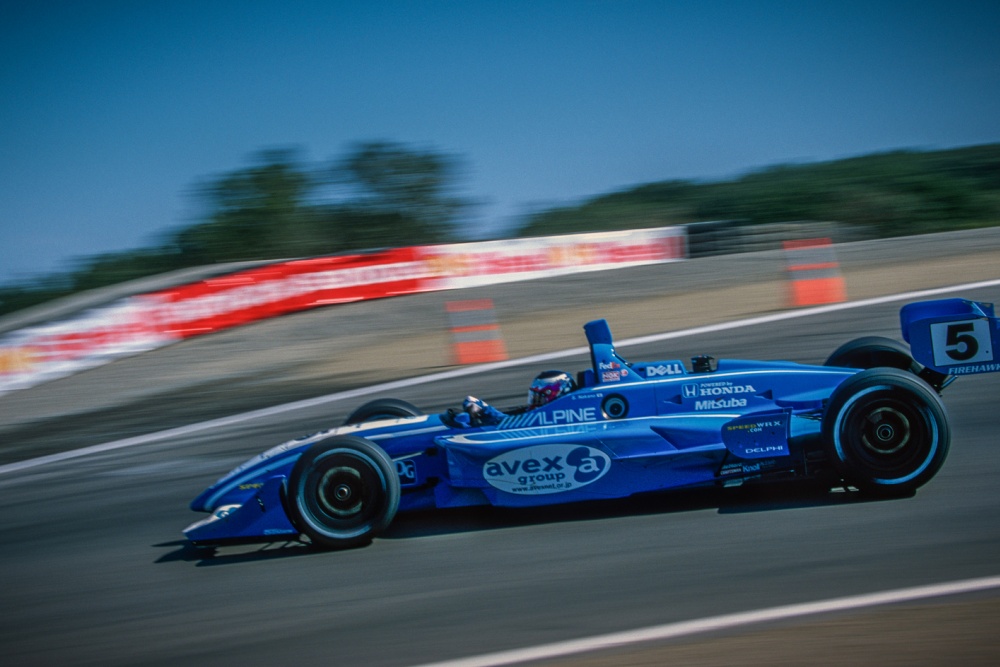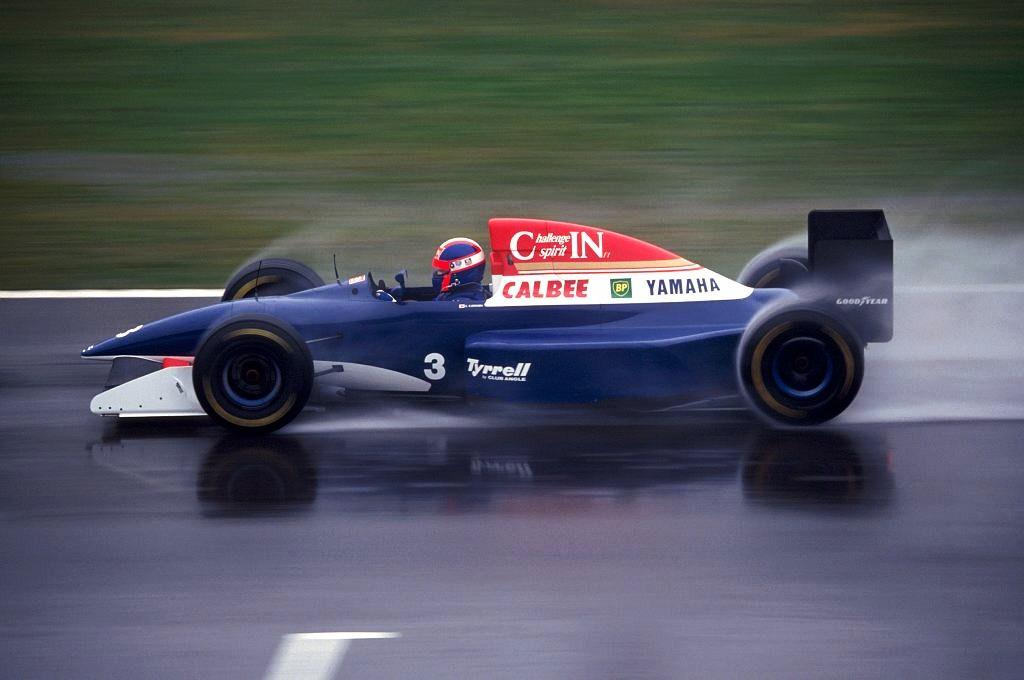Yuki Tsunoda will make his Grand Prix debut at this weekend Bahrain Grand Prix, making him the twenty-first Japanese driver to race in Formula 1. Which means this post is Top Seven Japanese F1 drivers.
Rules are simple for this list, they must raced more than two full seasons in F1 and scored points. Starting with number seven:
Number 7: Shinji Nakano
Story: Nakano came into Formula 1 after finishing sixth place the Formula Nippon Championship (Super Formula in 2021) in 1996.
Nakano started his F1 career at Prost in 1997, scoring two points, best result of two sixth place finishes. In 1998, Katayama moved to Nakano to finish his Formula 1 career.
After Formula 1, Nakano, did a few seasons in CART (IndyCar Series in 2021) and raced at Le Mans a few more times.
Overall, Shinji Nakano scored two points and best finish of eighteenth place in the drivers' standings in 1997.
Number 6: Ukyo Katayama
Story: Katayama came into Formula 1 after winning the Japanese Formula 3000 Championship (Super Formula in 2021) in 1991.
Katayama started his F1 career at Larrousse in 1992. After a season Katayama moved to Tyrrell and stayed there for four seasons, with a best season in 1994 scoring five points, best result of two fifth place finishes. In 1997, Katayama moved to Minardi to end his Formula 1 career.
After Formula 1, Katayama did a few seasons in JGTC (Super GT in 2021) and raced at Le Mans a few more times with a best result of second place in 1999 for Toyota alongside Keiichi Tsuchiya and Toshio Suzuki.
Overall, Ukyo Katayama scored five points and best finish of seventeenth place in the drivers' standings in 1994.
Number 5: Kazuki Nakajima
Story: Son of former Team Lotus driver Satoru Nakajima, came into Formula 1 after finishing fifth place the GP2 Series (Formula 2 in 2021) in 2007.
Nakajima started his F1 career at Williams in 2007, for the final round of the season. Stayed at Williams for 2008 and 2009 scoring nine points in his first full season, best result of sixth place at Melbourne.
After Formula 1, Nakajima raced in Super GT, Formula Nippon/Super Formula which include winning two titles in 2012 and 2014. Also, Nakajima raced in FIA WEC with Toyota winning 2018-19 WEC Championship alongside Fernando Alonso and Sébastien Buemi. Also, winning three 24 Hour of Le Mans races in 2018 alongside with Fernando Alonso and Sébastien Buemi, 2019 alongside with Fernando Alonso and Sébastien Buemi, and 2020 alongside with Brendon Hartley and Sébastien Buemi.
Overall, Kazuki Nakajima scored nine points and best finish of fifteenth place in the drivers' standings in 2008.
Number 4: Satoru Nakajima
Story: Nakajima came into Formula 1 after winning the Japanese Formula 3000 Championship five out of six times during 1981 till 1986.
Nakajima started his F1 career at Team Lotus in 1987, scoring seven points in his first season, best results of two fourth place finishes. In 1990, Nakajima moved to Tyrrell for two more seasons to finish his Formula 1 career.
After Formula 1, Nakajima build his own team called Nakajima Racing focusing on Super Formula and Super GT Championships in Japan and winning multiple championships in Super Formula.
Overall, Satoru Nakajima scored sixteen points and best finish of twelfth place in the drivers' standings in 1988.
Number 3: Aguri Suzuki
Story: Suzuki came into Formula 1 after winning the Japanese Formula 3000 Championship in 1988.
Suzuki started his F1 career at Larrousse in late 1988 at Suzuka. Moving to Zakspeed in 1989. Returning back to Larrousse for 1990 for his best season scoring six points, best result of a third place finish at his home Grand Prix at Suzuka. Suzuki stayed with Larrousse for another season. Then in 1992, Suzuki moved to Footwork (Arrows) for two seasons. Suzuki made one Grand Prix appearance in 1994 at Jordan replacing the banned Eddie Irvine at Aida. Then in 1995, moving to Ligier doing a handful of Grand Prix to end his Formula 1 career.
After Formula 1, Suzuki did a few seasons in JGTC and raced at Le Mans a few more times with a best result of third place in 1998 for Nissan alongside Kazuyoshi Hoshino and Masahiko Kageyama. In 2000, Suzuki build his own team called ARTA focusing on Super Formula and Super GT Championships in Japan and winning multiple championships in Super GT. In 2006, Suzuki enter his own F1 Team into Formula 1 with the assistance of Honda called Super Aguri, which stayed in the sport for two and half seasons. In 2014, Suzuki enter the Formula E championship with his own team called Team Aguri for two season selling the team in 2016 renamed as Techeetah.
Overall, Aguri Suzuki scored eight points and best finish of twelfth place in the drivers' standings in 1990.
Number 2: Kamui Kobayashi
Story: Kobayashi came into Formula 1 after finishing sixteenth place the GP2 Series in 2009.
Kobayashi started his F1 career at Toyota in late 2009 after Timo Glock got injured at Suzuka, Kobayashi scored points in his second Grand Prix at Abu Dhabi finishing sixth place. When Toyota withdrew from Formula at the end of 2009, Kobayashi moved to Sauber in 2010 for three seasons with the best season in 2012 scoring sixty points, best result of a third place finish at his home Grand Prix at Suzuka. After a season away from F1, Kobayashi return to Caterham in 2014 to finish his Formula 1 career.
After Formula 1, Kobayashi raced in Super Formula, raced in WEC with Toyota which include multiple second place finishes at Le Mans and winning 2019-20 WEC Championship alongside Mike Conway and José María López. Also, winning 2018 and 2019 Daytona 24 Hour race with Cadillac alongside Renger van der Zande, Jordan Taylor and Fernando Alonso in 2018; and alongside Renger van der Zande, Ryan Briscoe and Scott Dixon in 2019.
Overall, Kamui Kobayashi scored one hundred and twenty-five points and best finish of twelfth place in the drivers' standings in 2012.
Number 1: Takuma Sato
Story: Sato came into Formula 1 after winning the British Formula 3 Championship in 2001 (now discontinued in 2021).
Sato started his F1 career at Jordan in 2002. For 2003 Sato went to BAR Honda as a test-driver for the exemption of the last round of the season replacing Jacques Villeneuve for the Japanese Grand Prix. In 2004 Sato got the drive full-time with the best season in 2004 scoring thirty-four points, best result of a third place finish at the United States Grand Prix. Sato moved to new Super Aguri team in 2006 for two and half seasons to finish his Formula 1 career.
After Formula 1, Sato raced in Super Formula for a few seasons and moved to IndyCar Series in 2010 which includes winning the Indianapolis 500 twice in 2017 and 2020.
Overall, Takuma Sato scored forty-four points and best finish of eighth place in the drivers' standings in 2004.
Hopefully, Yuki Tsunoda will join the list in a few years time.















No comments:
Post a Comment